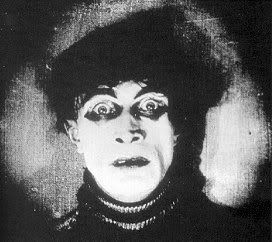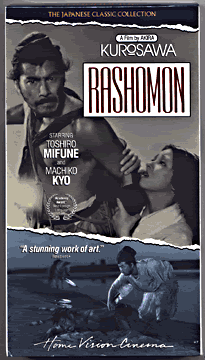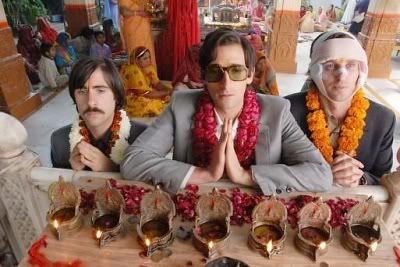Dr. Criddle's Scariest Film Scenes, Part One

Okay, so Halloween's been over now for about a week. But you know what? I don't care. I'm still in the spirit. Not unlike the ungrateful kid who regards his piles of opened Christmas presents and asks "is that it?", I see no reason to confine the celebration of monsters, ghouls and goblins to the month of October. So I decided to make a list of what I think are the top twenty scariest film scenes of all time. Here's part Rather than try to order them in terms of scariness (these things are always objective, aren't they?) I thought I'd place them chronologically. Here's part one. Part two will follow soon after.
1. The Cabinet of Dr. Caligari (1919) - Cesare Opens His Eyes
Conrad Veidt had one of the scariest faces ever captured on film, and it was never put to better use than in this German Expressionist classic. During a sideshow performance, the sinister Dr. Caligari commands his somnambulist slave, Cesare, to open his eyes and predict the fate of members of the audience. In one of the cinema's great close-ups, Cesare slo-o-owly flutters his eyelids to nearly a third of the way open, then thrusts them open without warning, locking the audience in a blood-chilling stare.
2. The Phantom of the Opera (1925) - The Phantom Unmasked
Although he told her she'd be better off resiting trying to get a glimpse of his face and trying to appreciate his "inner beauty," Mary Philbin's Christine just could not hold back from unmasking the mysterious and generous Phantom when he let his guard down while playing the organ. The result, if not one of the cinema's first "boo scares," is surely one of the few in silent film which still has the ability to put the fear of God up in an audience today. I had the good fortune of seeing this film on the big screen, with an audience of people who, unlike me, had not seen the film before on video and therefore knew about the scene in question. At the exact moment Christine rips off his mask, bearing the anguished face of Lon Chaney, I let out bloodcurdling scream. I doubt there was a dry pair of underpants in the room afterward.
3. Pinocchio (1940) - Lampwick Becomes a Jackass
Everyone, while growing up, it seems, was terrified of a scene in a Disney movie, and it's hardly surprising. Like the Grimm Brothers fairy tales that inspired many of them, these were stories of high stakes, genuine risk, and grotesque supernatural terrors; stories with real suspense and drama, not flatulent ogres. Many will cite Snow White's Wicked Queen, the death of Bambi's mother, or the alcohol-induced visions of Pink Elephants from Dumbo as the scariest scenes to come out of the mouse house, but for my money, Pinocchio was always their scariest film as well as their overall finest achievement. Most frightening of all is the scene in which Pinocchio's new friend Lampwick turns into a donkey right before his eyes, his hysterical cries turning into frantic hee-haws. Pinocchio then flees with Jiminy Cricket and finds out the secret of Pleasure Island; that hedonistic, anarchic young boys are transformed into donkeys by the sadistic Coachman and sold into hard labor.
4. Cat People (1942) - Jane Randolph Goes for a Swim
Producer Val Lewton was one of the cinema's great geniei of low-budget B-pictures. For most of his career, he was given lurid dreamt-up titles like "I Walked With a Zombie" and "The Body Snatcher" by his superiors at RKO studios, and then sent off with one his frequent directors to make a profitable, yet beautifully rich and artful films based on them. His masterpiece, for which he teamed up with frequent director Jacques Tourneur, is a parable of female jealousy-fueled animal transformation which brilliantly builds suspense around the titular monster (there's really only one Cat Person) but never explicitly showing it. In the film's finest scene, Simone Simon's perceived rival Jane Randolph takes a dip in a hotel swimming pool and is menaced by an unseen feline beast. She manages to calm herself down, convinced she just imagined it... until she gets out to dry herself off only to find her towel covered in clawmark-shaped holes!
5. Black Narcissus (1947) - Sister Ruth Does Her Makeup
Question: how can a nun putting on her lipstick be scary? Answer: in the hands of Michael Powell and Emeric Pressburger, anything can be scary. This story of a group of nuns whose faith is severely tested by weather conditions and other freakish acts of nature around a mountaintop convent is one of the all-time great films. This scene, in particular, is utterly, pants-soilingly terrifying. It'd be a shame to ruin the movie, which was released in a lovely package from the Criteron Collection, so I encourage you to go check it out yourself. The film has some of the best use of Technicolor I've seen this side of Kwaidan and truly boasts one of the scariest, most emotionally intense endings ever.
6. Night of the Hunter (1955) - "Chilll-dren!"
This obscure delight of a film is the lone directorial effort by Charles Laughton, and boy do I ever wish he made more. I go back and forth as to whether this film, the original Wicker Man, or Kubrick's 2001 is my favorite film of all time. It's equal parts film noir, horror, and Grimm Brothers fairy tale, starring Robert Mitchum as an insane preacher who does the Lord's work by bumping off Bible Belt dwelling widows and stealing their money. Having found out about a large sum of stolen money from a death row inmate, he proceeds to get chummy and win the trust of the local yokels in the man's hometown, marry his widow, then murder her, and reveal his true nature as a wolf in sheep's clothing by turning on his two children, the only ones who know the secret of the hidden dough. In the film's scariest scene, Powell stands at the top of the stairs as the two "little lambs" hide cowering in the root celler. "Chillll-dren!" he gleefully croons. "Chillll-dren? I can hear you whisperin', children, so I know you're down there. I can feel myself gettin' awful mad." Reportedly, while casting this picture, Laughton described the character of Powell to Mitchum as "a diabolical shit," to which Mitchum replied, "Present!"
7. The Birds (1963) - Tippi Hedren Goes Upstairs
This film has a special place in my heart as the very first Hitchcock movie I ever saw, and, at the tender age of eleven, it scared the everloving bejeezus out of me, and I still give large groups of pigeons and crows a wide berth when I see them in the park. Among many things, Hitchcock used natural sound to a stunning effect, or in this particular scene, the lack thereof. Trapped in a house that is boarded up against the hoards of oncoming orinths, Hedren's character Marion goes upstairs to check out a noise she heard in the attic. In one of the cinema's greatest "don't go in there, bitch!" moments, the only sound we hear is the creeeaking of the stairs as she slowly ascends, and goes through the attic door, where she is promptly attacked by birds. In a rather revolutionary move, Hitchcock opted to have no musical score to speak of, only the ominous, layered fluttering of wings. It works wonders.
8. Repulsion (1965) - The Finale
And speaking of Hitchcock, if anyone deserved to inherit the crown of "Master of Suspense" from him, it would be Roman Polanski. His films explored the nature of fear both psychological and supernatrual, and Repulsion, his first English language feature, deals with both. Sexually repressed virgin Catherine Deneuve holes herself up in her sister's apartment, where she is plagued by fantasies of rape, rotting flesh, cracking walls, and arms protruding through the ceiling. This film is probably the scaries motion picture I've ever seen in my life - it grabs ahold of you and never lets go, making the viewer feel like he/she's going insane along with the main character.
9. The Texas Chainsaw Massacre (1974) - Chicken in the Birdcage
Tobe Hooper's masterpiece is a roller-coaster ride of low-budget, backwoods horror, but there is one scene in particular that stands out to me because of its clever incorporation of one of my many phobias. Afteer Pan (Terri McGinn), runs into Leatherface's house, she comes careening into their living room, which is filled with human and animal bones, lamps and furniature made out of body parts, and a chicken in a birdcage. You see, I have a strange and irrational fear of chickens. Putting a big, fat white chicken in a cage intended for a much smaller parakeet or budgie just ups the ante that much, making an already-terrifying scene even worse.
10. Jaws (1975) - Quint Shares a Shark Story
Although there are numerous scary moments in this film achieved with severed heads, underwater POV shots, and an animatronic shark, the most blood-chilling scene is Quint's monologue, wherein he explains his dislike of sharks, due to the fact that he was a sailor on board the U.S.S. Indianapolis. His monologue (which was penned by John Milius) is so vivid, and so convincingly delivered by Robert Shaw, that we feel as if we've witnessed a film of the events in question as opposed to having just heard about them. Anyway... we delivered the bomb.






